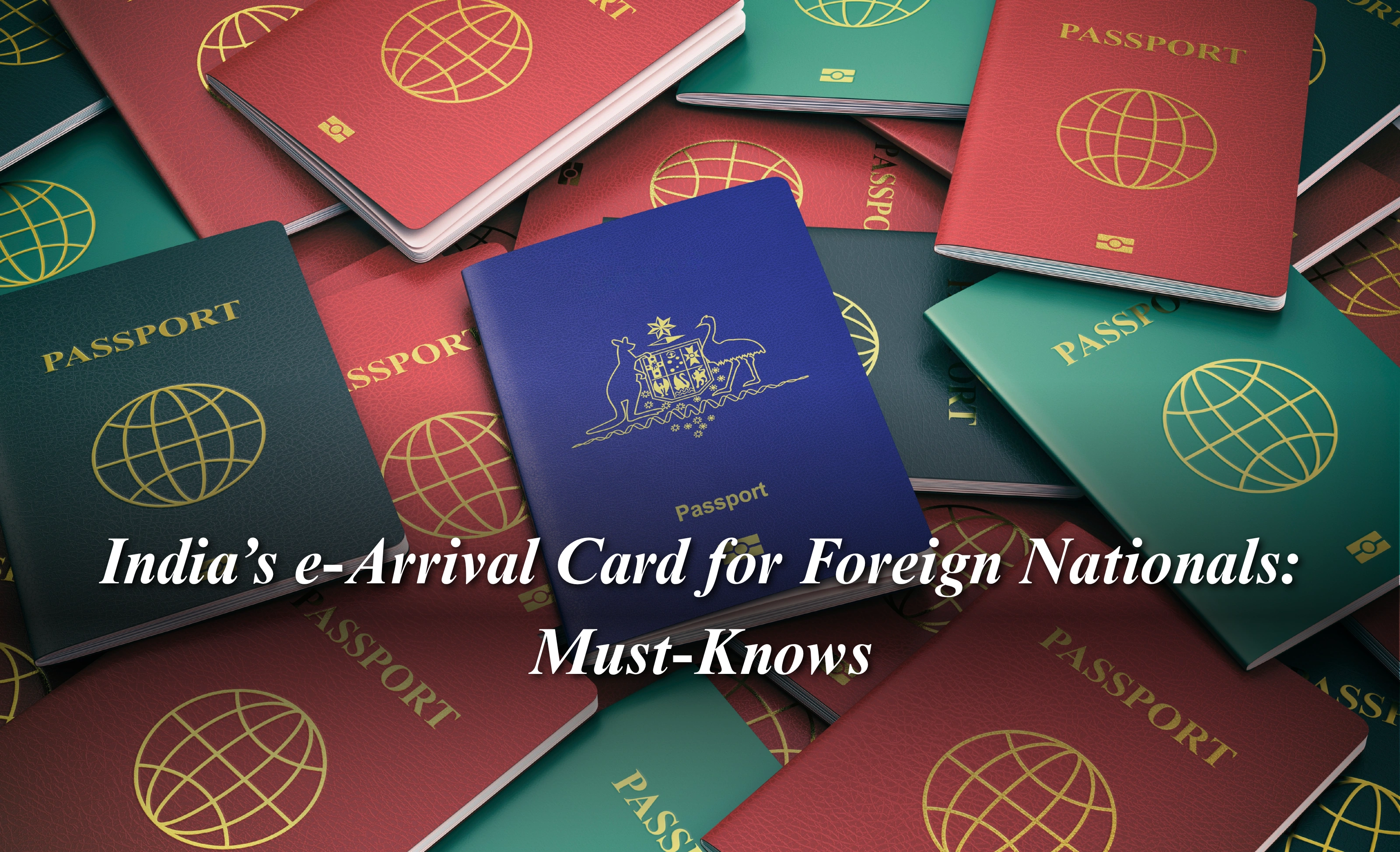7 Best Places for Stargazing in India: See the Milky Way Like Never Before
by Travelopod
September 24, 2025
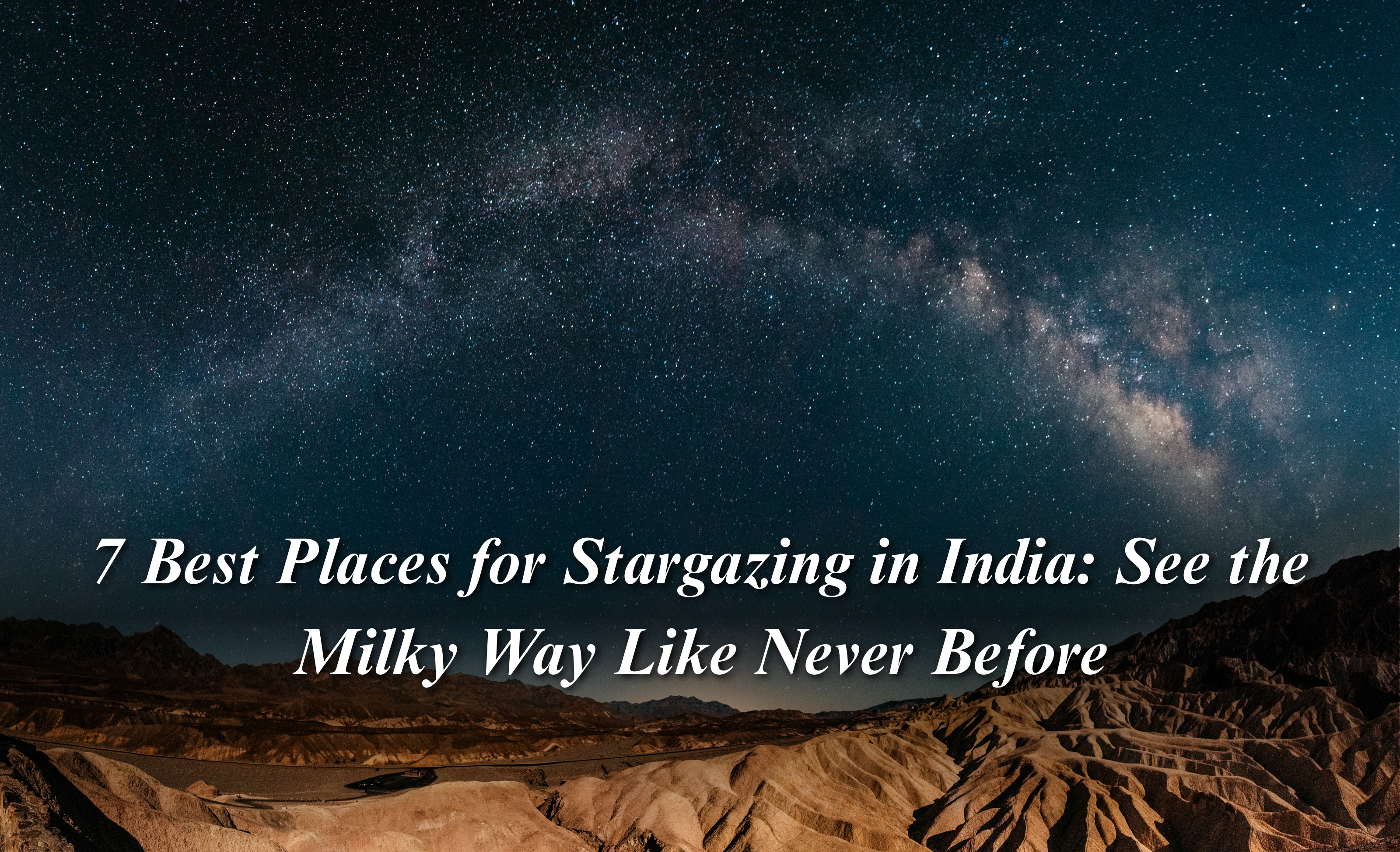
India, being one of the most populous and light-filled countries on Earth, surprisingly is home to places where the night sky remains untouched. There are no flickering artificial lights, just raw darkness offering uninterrupted views of the starry night. And if you're lucky, a glimpse of the Milky Way might leave you spellbound.
We have curated the list of the 7 best places for stargazing in India. These seven destinations aren’t just beautiful but also offer the perfect night sky visibility. They’re atmospheric sweet spots, each offering the right mix of elevation, climate, and remoteness. Let’s explore them!
1. Hanle, Ladakh — India’s First Dark Sky Reserve
1. Hanle, Ladakh — India’s First Dark Sky Reserve
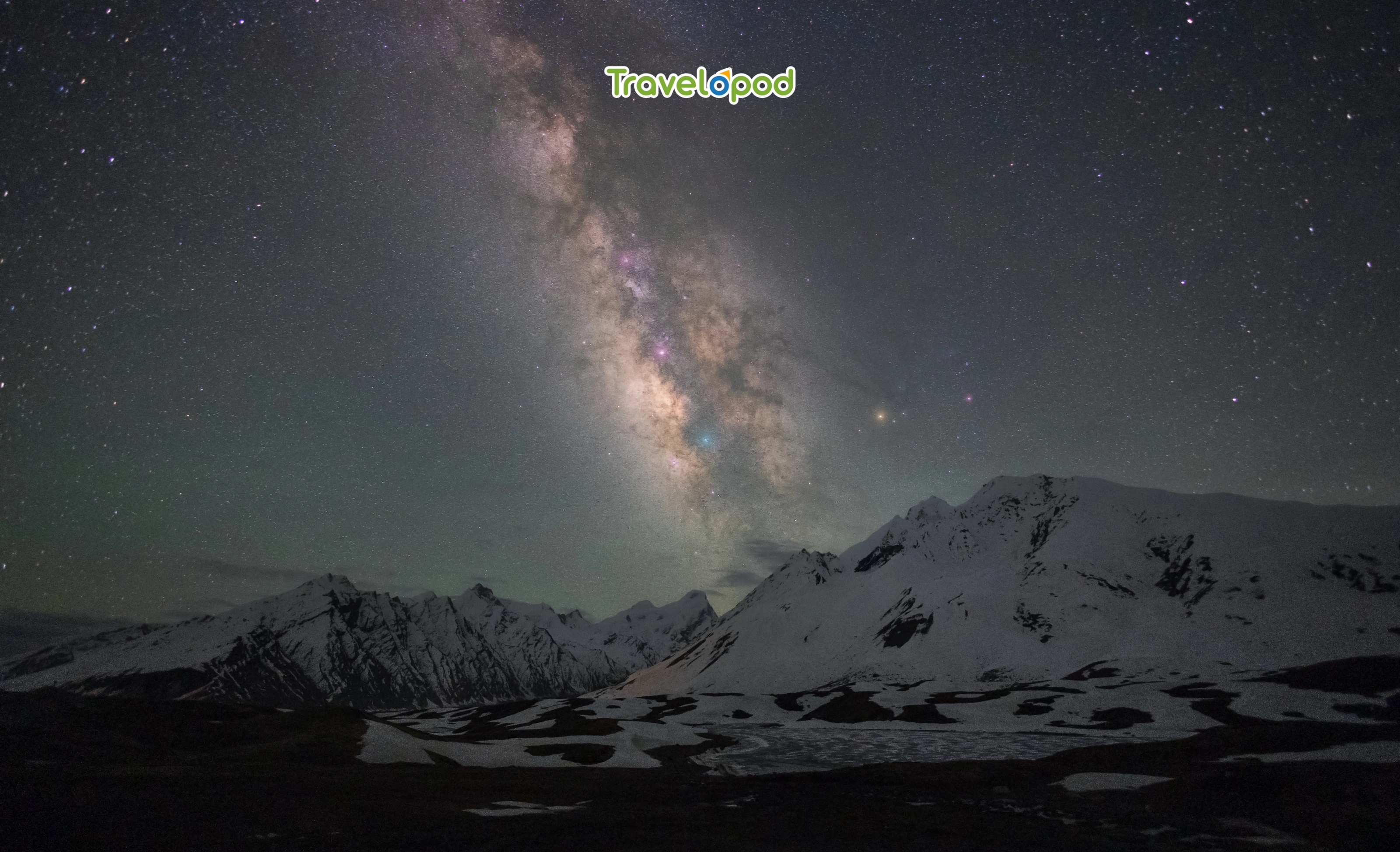
At over 4,500 meters above sea level, Hanle is one of the highest, driest, and most isolated villages in the country. And that’s exactly why it works.
In 2022, Hanle became India’s 1st Dark Sky Reserve, a title that isn’t handed out lightly. There is no interference from artificial light, the infrastructure is minimal, and the sky is untouched. You will be served with the clear views of bands of the Milky Way without needing a telescope. You’ll witness planets rise and set without interruption with your naked eyes.
One of the world’s highest observatories, the Indian Astronomical Observatory, is based here because Hanle provides ideal conditions for astronomy tourism.
Best Time to Visit: May to September. Winter cuts off access completely.
2. Pangong Lake — Still Waters, Celestial Mirror
2. Pangong Lake — Still Waters, Celestial Mirror
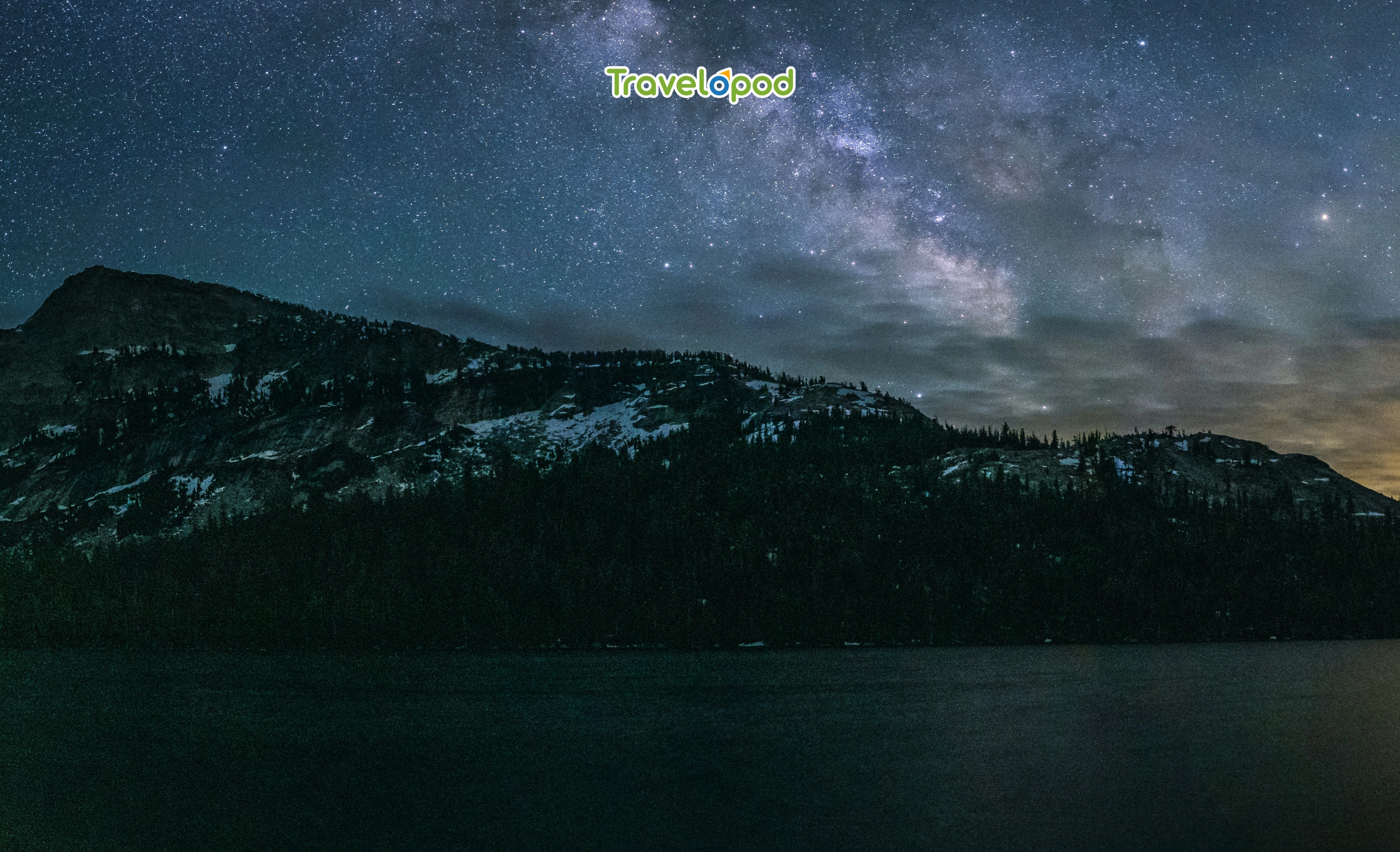
Many of you must have witnessed Pangong’s surreal blue waters under a cloudless sky during the day. But few capture the Pangong Lake night sky.
At night, when the lake calms, it becomes a canvas. Constellations reflect off its surface with startling clarity. On windless nights, it’s hard to tell where the sky ends and the water begins. There are no city lights here. No glow creeping in from nearby towns. Just the quiet rhythm of high-altitude air and a universe revealing itself one star at a time.
Note: Even in summer, nights can dip below freezing. Pack accordingly.
3. Spiti Valley, Himachal Pradesh — Where Altitude Meets Stillness
3. Spiti Valley, Himachal Pradesh — Where Altitude Meets Stillness
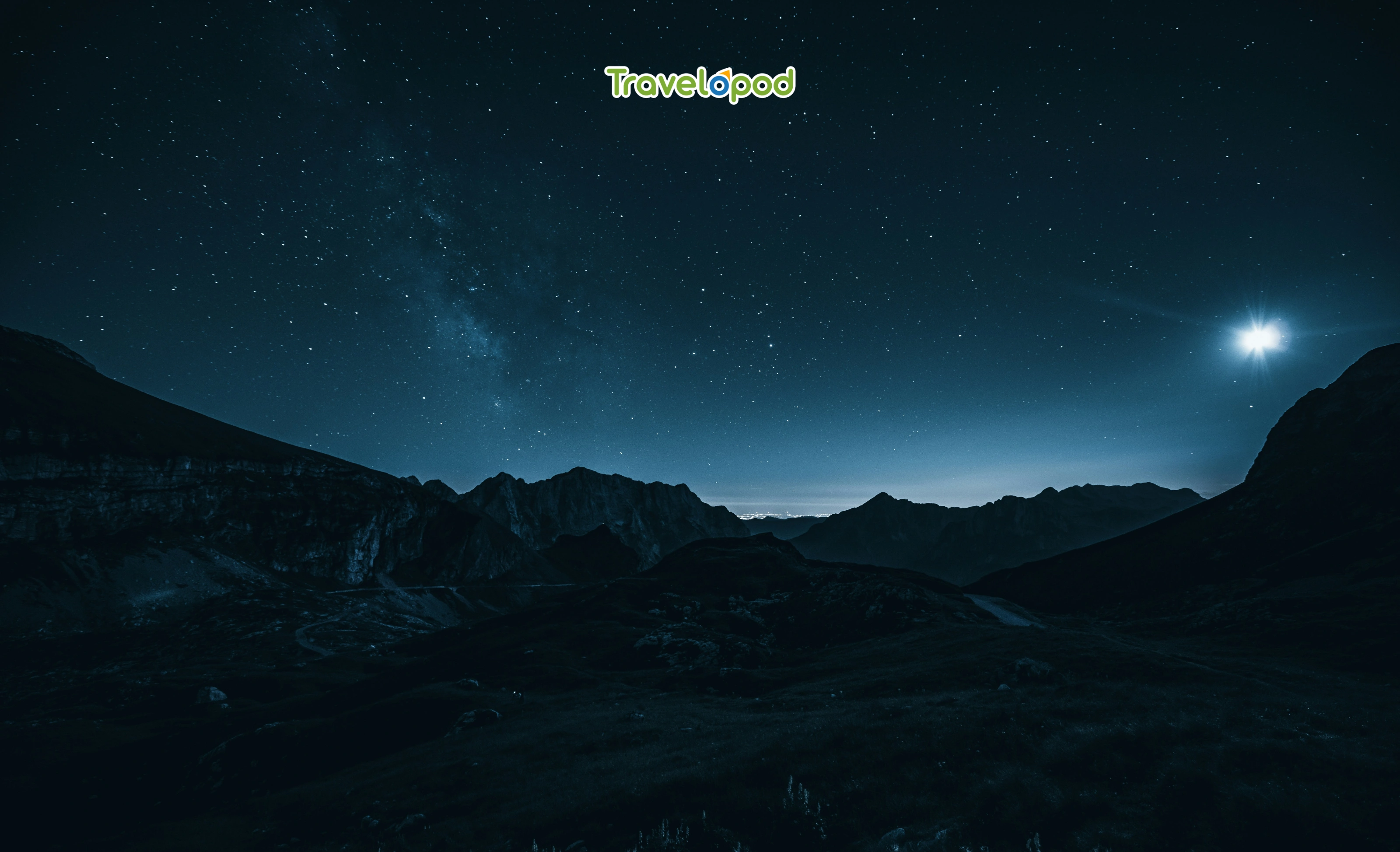
Spiti doesn’t fight for your attention; it simply waits. Villages like Kibber and stretches inside Pin Valley National Park sit quietly at over 4,000 meters, far from the chaos of more-traveled Himalayan regions.
The air is dry, the nights are long, and the atmosphere is surprisingly stable. No haze. No moisture. Just a sky that feels close enough to touch. Here, you don’t just see stars, you see space, the depth, and the scale. And if you have a telescope, Spiti’s sky opens wider than most places on Earth.
Best Time to Visit: June to October. Snow blocks access for the rest of the year.
4. Rann of Kutch, Gujarat — Sky in All Directions
4. Rann of Kutch, Gujarat — Sky in All Directions
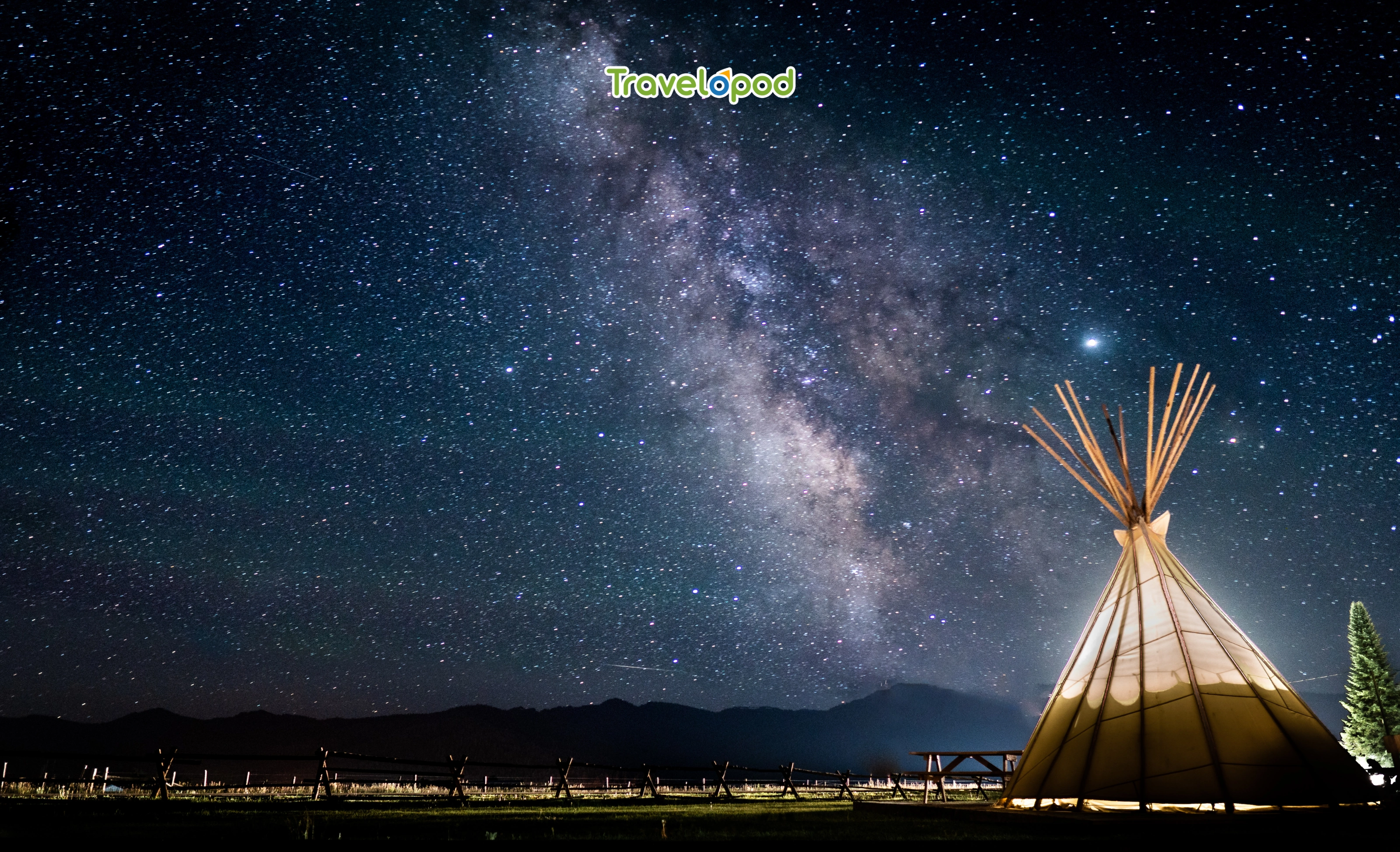
There’s no elevation here. No peaks to climb. No trees to duck. The Great Rann of Kutch is as flat as it gets, and that’s its strength.
During the dry months, the salt flats harden and stretch endlessly in all directions. There’s nothing to block your view. Stand in the middle of it, and the sky surrounds you. It’s beautiful and unforgettable.
Best Time to Visit: Visit during Rann Utsav (November–February) for Rann of Kutch stargazing and a cultural extravaganza.
5. Jaisalmer, Rajasthan — Stars Above the Dunes
5. Jaisalmer, Rajasthan — Stars Above the Dunes
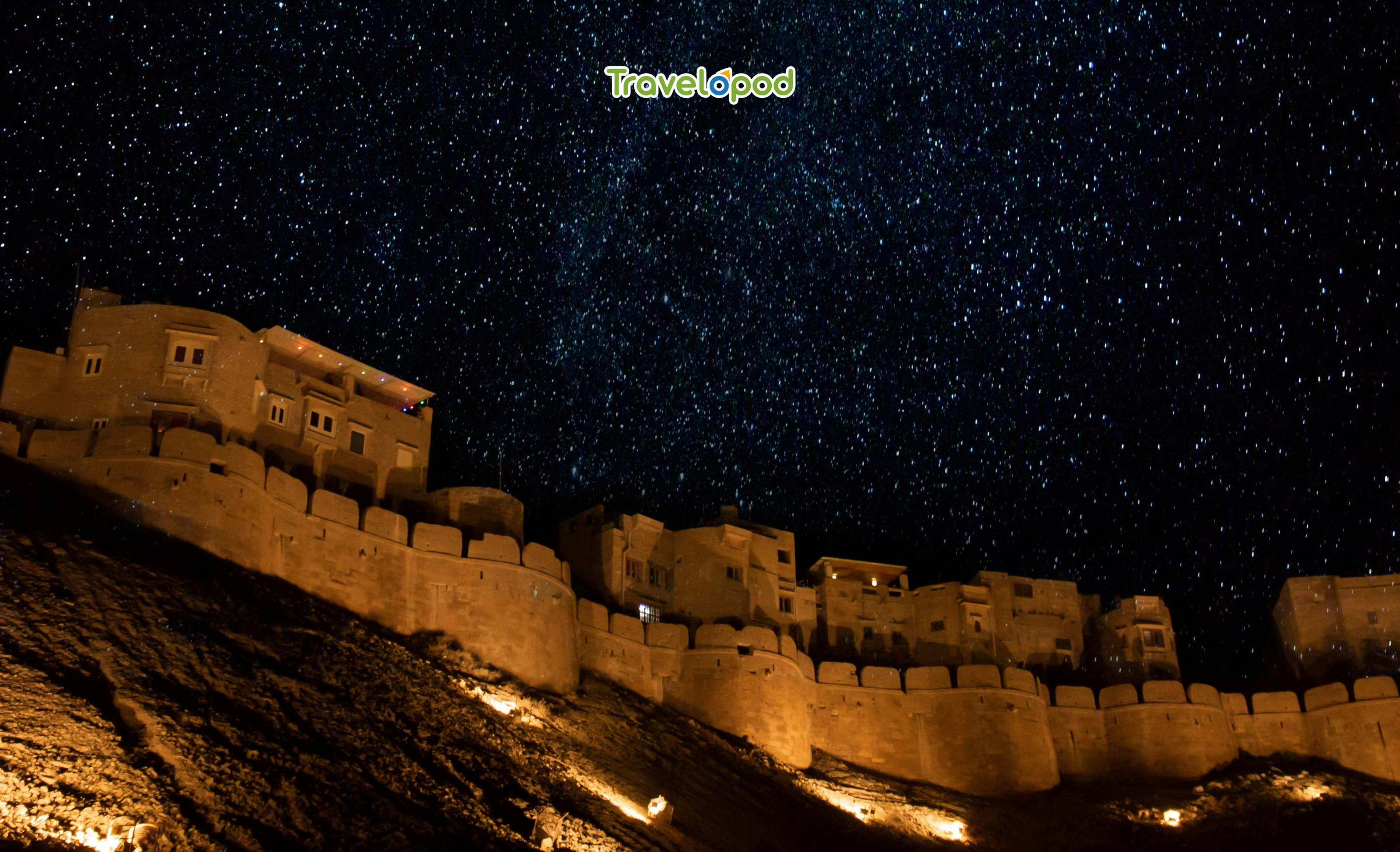
If you think all deserts are the same at night, you are mistaken. They’re not. The Thar Desert, especially near Sam Sand Dunes, has a quiet wind, powdery sand, and a dry atmosphere that makes stargazing surprisingly sharp.
Some camps here offer telescopes while others provide nothing but a mattress, a blanket, and the sky. Either way, this is where you see the sky without distractions.
Bonus Tip: The winter months bring traditional music, camel rides, and impeccable hospitality, making the whole experience immersive.
6. Pachmarhi, Madhya Pradesh — Comfortable Stargazing
6. Pachmarhi, Madhya Pradesh — Comfortable Stargazing
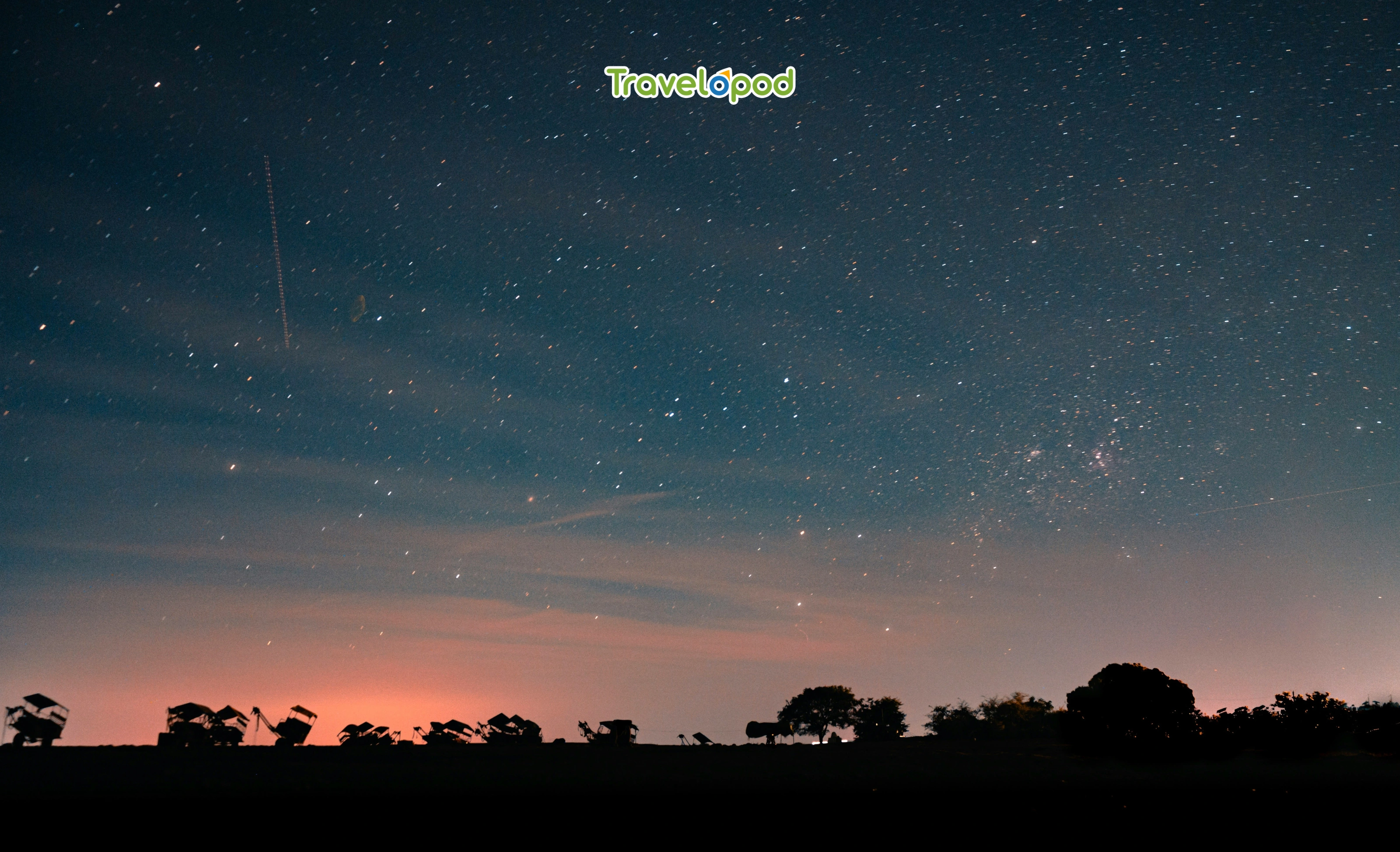
For those seeking access, ease, and the night sky visibility, Pachmarhi hits all the right spots. Tucked in the Satpura range, this forested plateau balances altitude (just over 1,000 meters) with biodiversity. It’s a biosphere reserve, which means development is minimal, and skies stay relatively dark.
Several eco-resorts in Panchmarhi host night-sky sessions perfect for families or those experiencing astronomy tourism for the first time. It’s less about chasing astrophotography shots and more about enjoying the night at your own pace.
Best Time to Visit: October to June.
7. Coorg, Karnataka — South India’s Stargazing Secret
7. Coorg, Karnataka — South India’s Stargazing Secret
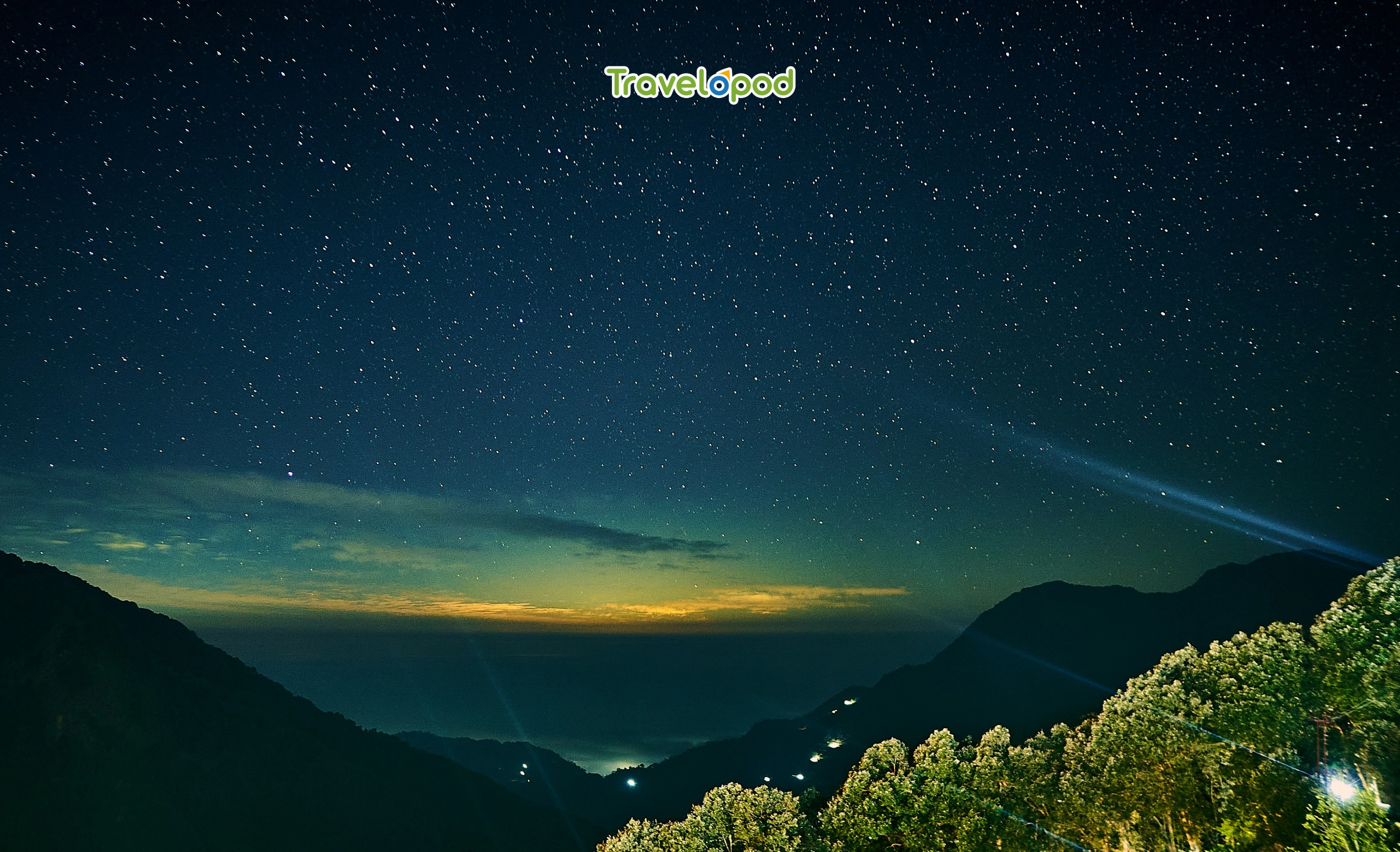
Coorg isn’t known for stargazing, but it should be, as it offers the apt conditions in the dry season, when the clouds roll back and the plantations quiet down.
Outside the main towns, particularly near Virajpet, you’ll find hills that open just enough to give you a wide, clean view of the southern sky. It won’t compete with Hanle, but for southern travelers, it’s a rare treat.
Several homestays and observatories now offer guided sessions during meteor showers and lunar events.
Best Time to Visit: November to April. Avoid the peak monsoon.
Bonus Tip: Book flights to Bengaluru over the phone with Travelopod and get up to 30% off on flight bookings.
Travel Tips for Stargazing in India
Travel Tips for Stargazing in India
- Avoid full moons. The darker the night, the better the contrast.
- Use red-filter flashlights. They won’t wreck your night vision.
- Apps help. Stellarium or SkyView can help identify planets, constellations, and satellites.
- Bring layers. High-altitude and desert regions drop quickly after dusk.
- Stay still. Light movement and noise ruin more than you’d think.
- No litter. No lights. Respect the location. Let the sky do the talking.
Key Takeaway
Key Takeaway
In India, despite all its hustle, that quiet and dark night sky still exists. In deserts. On plateaus. Along mountain ridges and salt fields. These destinations aren’t about ticking off a list. Stargazing, when done right, strips everything away and leaves you with a kind of stillness. It’s not about filters, likes, or lens flares; it's way beyond what we expect.
It's something you once experienced, you won’t forget it.
Planning your stargazing escape? Call Travelopod and let our travel experts hunt down the best deals that you won't find online. Score up to 30% off on flights to India with our exclusive phone-only deals. Call Now!
EXPLORE MORE
